11 Steps to a Winning Pre-Launch App Marketing Strategy

11 Steps to a Winning Pre-Launch App Marketing Strategy
3 million apps are available today. Here are 10 pre-launch marketing efforts that will generate buzz and drive downloads for your mobile app on launch date.
Updated 08/09/2022
Marketing a mobile app before its launch is similar to creating a snowball.
Barely noticeable at first, each bit of outreach layers together to create momentum throughout the app’s development. When you’re ready to launch, the ball is rolling and people are buzzing.
Marketing your app is more important than ever. According to reporting firm Statista, more than 4.8 million unique apps are available today in the Apple App Store alone.
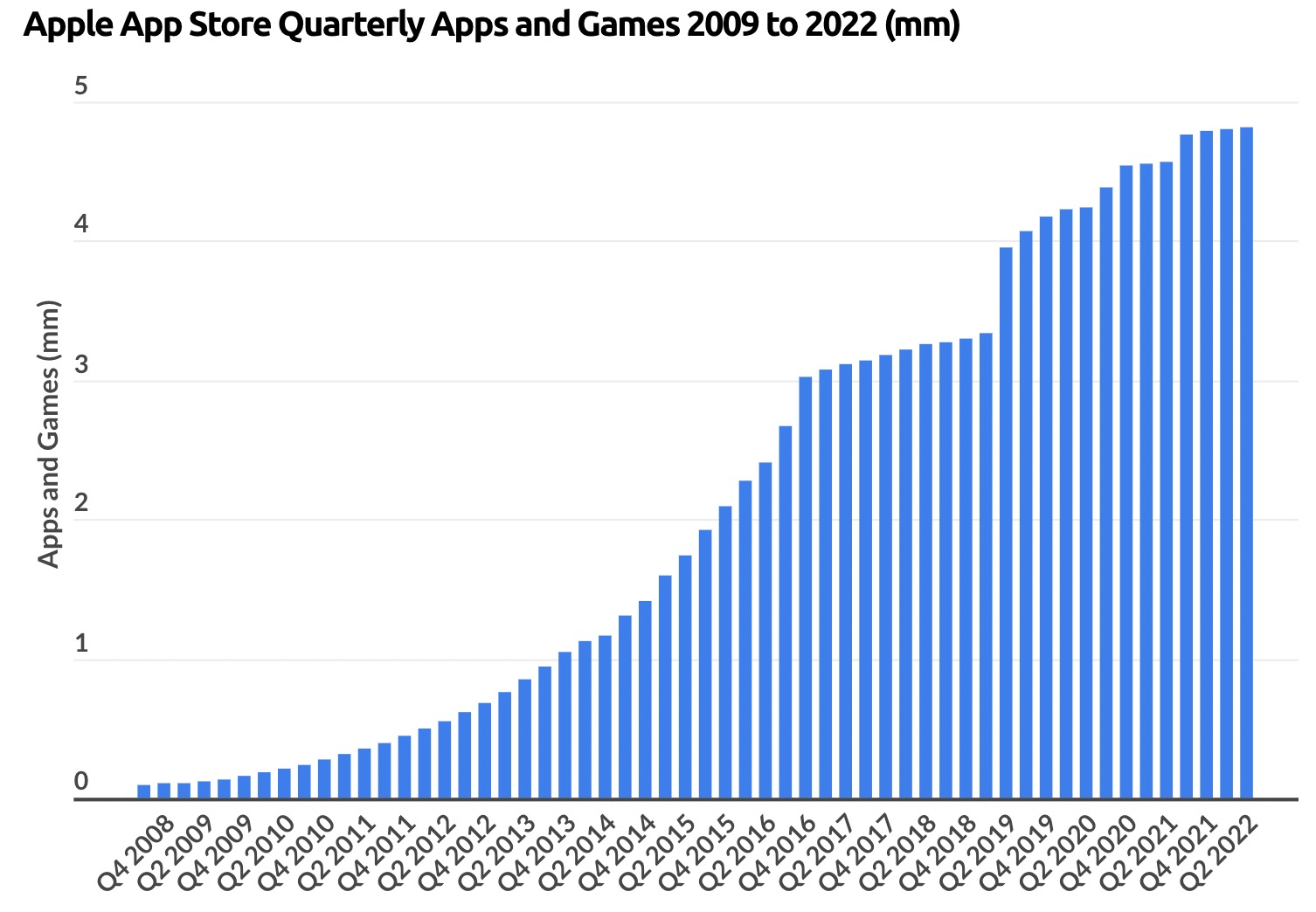
Source: PocketGamer
This means your app doesn’t stand a chance of gaining traction with users if you don’t promote your app beforehand.
Still, while the space is more competitive, that doesn’t mean there’s any less interest in apps. In fact, total app downloads have only increased in the past few years.

Source: Buildfire
With the right strategy, you’ll blow your user acquisition metrics out of the water by tapping into the growing interest in apps.
The Perfect Pre-Launch Strategy in 11 Steps
Here are the 11 steps for creating a pre-launch marketing strategy for your app:
- Research your users and competitors
- Start connecting with app users early
- Create a website for your app
- Start a blog for content marketing
- Connect with email marketing
- Create buzz with social media
- Prepare a press kit
- Reach out to influencers
- Call for beta testers
- Plan your app store optimization (ASO)
- Establish KPIs and metrics
Need help with app marketing? We’ve got you — connect with an app marketing company on The Manifest.
1. Research Your Users and Competitors
An effective app marketing plan begins with understanding your users and competitors. Gathering demographic data on users helps you visualize exactly who you’re trying to reach.
From teens to digital nomads, each audience has different needs and usage and spending patterns. You’ll need to address these factors in your marketing messages to gain users.
Researching the competition shows you how users interact with apps like yours and their expected behaviors. Looking at other apps lets you position yourself against their selling points, weaknesses, and relevant keywords.

With your competitor data, modify your approach to offer potential users value in a unique way.
2. Start Marketing Your App Early
App marketing is a grind, so begin at the development stage.
Awareness builds slowly and peaks at the launch date, so pick your channels and stay consistent to build interest.
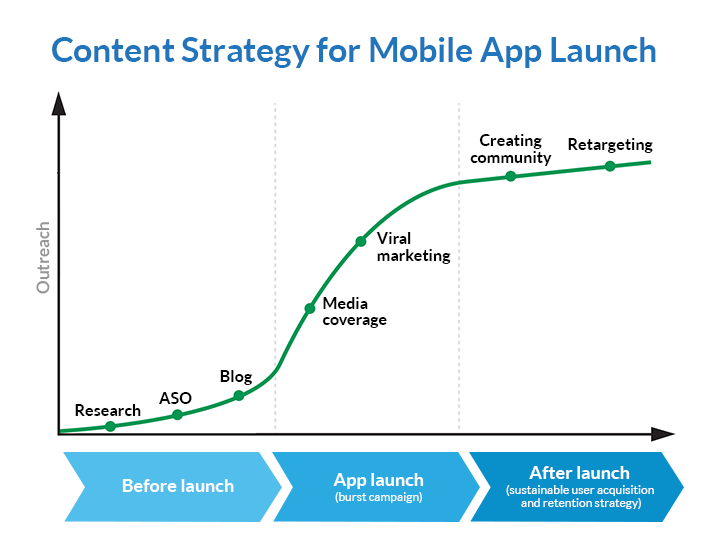
To muster early support:
- Reach out to friends, family, colleagues, customers, peer groups
- Seek potential users as soon as possible, and include them in your marketing
- Solicit feedback from your inner circle, who will later become your best supporters
3. Create a Website for Your App
A website is the hub of your pre-launch app marketing strategy.
You expand your web presence by hosting content and displaying your app to potential users in a number of ways:
- Publish expert blogs to create value for visitors, drive web traffic, and boost search engine optimization (SEO)
- Run interactive app marketing campaigns such as giveaways, contests, or quizzes
- Encourage email signups to enable drip marketing (which automatically delivers marketing messages to users inboxes)
- Create dedicated landing pages for each marketing initiative (e.g., free demo) to increase downloads
Website builders like WordPress and Squarespace are inexpensive, blog-ready platforms that can be ready in less than an hour.
4. Start a Blog
Blogging helps you update your growing fan base and attract new users. Each post should solidify your brand voice and speak to relevant issues surrounding the app.
Conducting keyword research with Google Keyword Planner helps you maximize your SEO rankings and write to what’s in demand.
For example, if your app is geared to weight loss, research the relevant search terms and questions in this space. Answering searcher’s questions will attract your audience while simultaneously promoting your app.
The key is to create content your audience wants to read – as exemplified by the music streaming platform iHeartRadio.
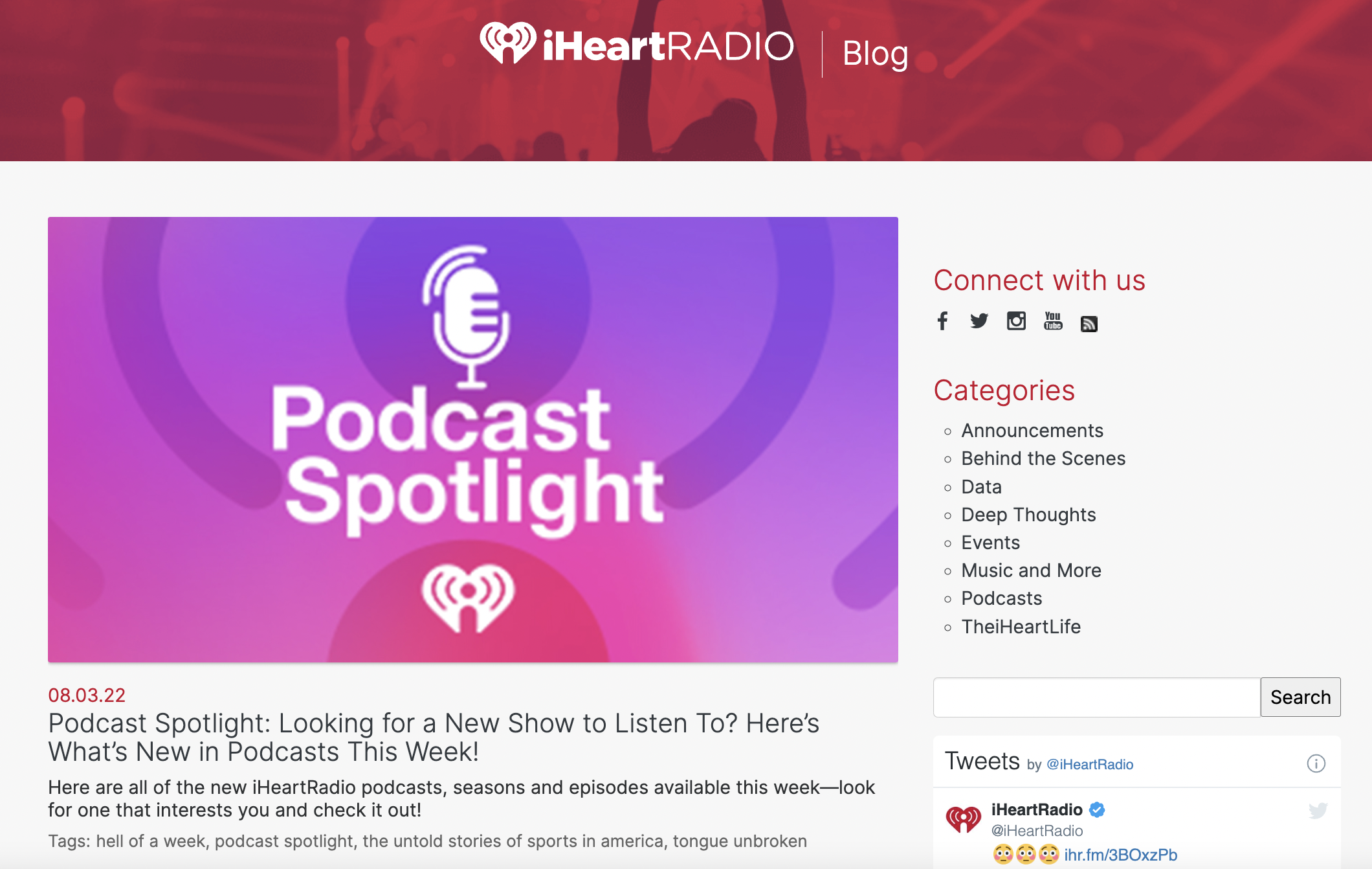
Source: iHeartRadio
A blog like this can also have the same benefits of social media marketing: increasing brand awareness and developing an overall brand voice or thought leadership. Updating your blog regularly will help it perform its best and be more visible to users.
5. Connect With Email Marketing
Email marketing is a cheap and easy way to sustain interest with prospective users.
Sending subscribers the latest blog post and a bi-weekly newsletter updates them about your progress. People who read your emails during app development are more likely to become customers come launch day.
For optimal engagement, craft evocative and descriptive subject lines.
Short, personalized subject lines make the most impact, which is important because almost half of email recipients decide whether to open an email based on the subject line alone.

Source: Tidio
Subscribers may not read each email, but they will be able to track your progress with a quick glance at the subject line.
6. Create Buzz With Social Media
Social media is amazing for creating hype and developing a strong community around your app.
Choose a few main social media platforms that your audience prefers, then establish a routine for engaging with them and distributing content.
Quora and Reddit can also be used to gather feedback from highly active niches and to promote your app by word of mouth.
![]()
Learn how to market your app on Quora in 5 steps.
Here are some best practices for marketing your app on social media:
- Post frequently
- Use relevant hashtags
- Feature influencer reviews
- Solicit feedback on app features
- Invite engagement with contests, giveaways, and promotions
- Share a mix of screenshots, ‘how-to’ videos, GIFs, high-quality images, and blogs
- Interact with similar pages to spark a discussion with their audience
7. Prepare a Press Kit
A press kit is a one-stop resource for journalists and influencers. It contains all the information, images, and context for why your app deserves a good review.
A complete press kit will streamline the writing process for journalists, making sure they have everything they need.
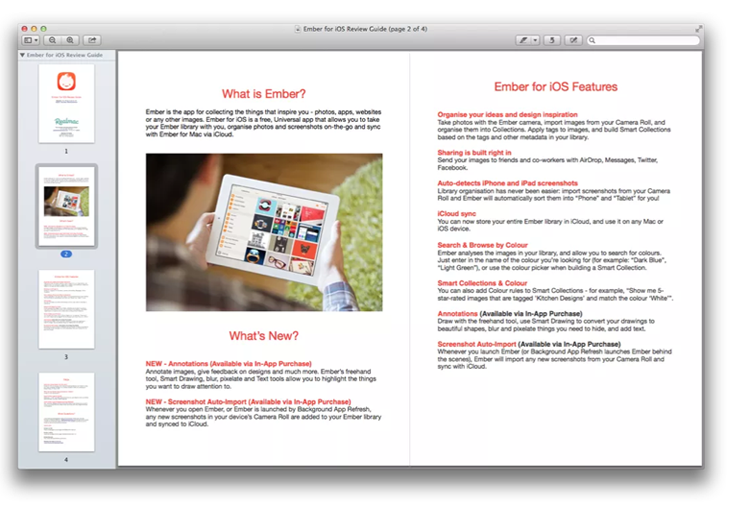
A press kit should include each of the following:
- Review guide: Highlight the features, pricing, FAQ, release information, and your contact details
- Screenshots: Show your app at its best because publications will use these photos in their write up
- Lifestyle photos: Feature your app in a natural scenario that emphasizes its use and value
- Icons, logos, banners: Include .png images for digital posts, or .eps for print publications
- Video: Enhance the reach and impact of your marketing; upload to YouTube or Vimeo for best compatibility
8. Reach Out to Influencers
An influencer endorsement will skyrocket the pre-launch hype for your app. Their help can extend your reach and increase brand awareness.
Influencer marketing firm Collective Bias found that 60% of consumers are influenced by blog review or a social media reviews.
Depending on your budget and target market, you may choose to reach out to a different type of influencer. Here are a few types of influencers that are ideal for a pre-launch promo:
- Macro influencers: influencers that have hundreds of thousands of followers, boasting a broad reach or celebrity status
- Micro-influencers: influencers with a smaller yet more niche reach of up to 50,000 followers
- Nano influencers: influencers with only a few thousand influencers, but can promote things within small special interest groups
Additional Reading: 5 Types of Influencers for Social Media Success
You can reach out to tech bloggers, journalists, or industry leaders to capitalize on their authority.
Send these people your press release along with a description of your app and its benefits, as seen here.
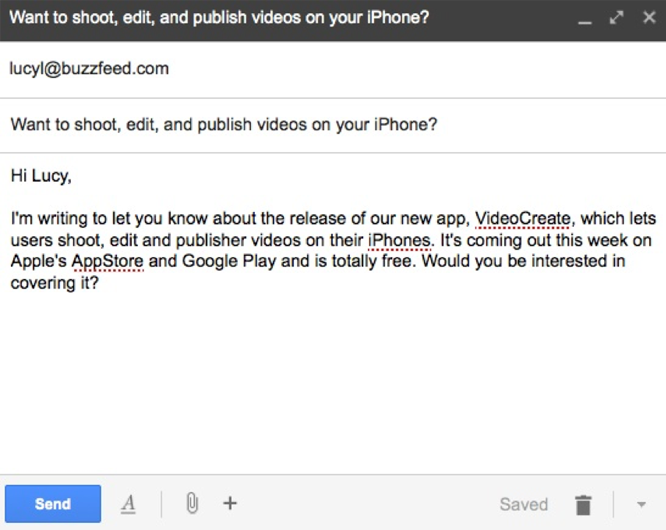
You can find influencers by using tools like FollowerWonk, Klout, or Traackr.
9. Call for Beta Testers
Beta testers help you improve your app quality and empower your pre- and post-launch app marketing strategies.
Testers provide insight into your target audience, helping you select the right features. They can also become your biggest advocates.
Calling for beta testers is itself remarkable and will increase your exposure. Since people want what they can’t have, indicating that you’re close to launch will excite followers.
Here, an AI startup company is aiming to connect with user testers on LinkedIn. Sharing a call for beta testers within your network helps generate some interest for the upcoming launch of your app.

Source: Valkure
To find beta testers, visit sites like Ubertesters, Betalist, or even Reddit.
10. Optimize Your App Store Listing
This is the critical and final stage of your pre-launch app marketing strategy.
The two main stores to focus on are Apple’s App Store and the Google Play Store. Depending on whether your app is made for iOS, Android, or both, you’ll need a mobile app marketing strategy for each store.
Luckily, the process of app store optimization is similar on both platforms. Still, it’s important that your app ranks when users navigate from the store page to app store search.
After all, this is where people decide whether to buy your app. To get the most downloads, you’ll need to optimize several key areas of your app store listing. Make sure that:
- The app name describes your app function and encourages downloads
- The app description tells your story, attracts users, and contains relevant keywords
- The app visuals (screenshots, preview videos, app icons) entice users to buy
- The keyword optimization targets the language users will use to search for an app like yours
11. Establish KPIs and Metrics
A huge part of just about any digital marketing project is tracking performance.
- Churn rate: also known as attrition rate, the rate at which customers leave your app or services
- Conversion rate: the percentage of consumers that see an ad that covert
- Retention rate: the rate at which customers stick with your app or services over a given period
- App installs: total number of times your app has been installed
- Active users: total number of users who have opened an app within a given period
Mobile App Development Marketing Activities to Start Right After Successful App Launch
So, you planned and executed a pre-launch strategy across marketing channels? Now, it’s time to show off your new app post-launch. Here are a few ways to
Optimize User Experience
After launching your product, it’s already time to start thinking about iterating on what you launched.
Does the flow between landing pages, social media ads, and app store pages make sense? Is there a common pain point your users are facing?
Sometimes, it takes some trial and error to fine-tune the overall user experience and journey for an app. Don’t be discouraged by this, and keep asking questions, problem-solving, and iterating.
Send Push Notifications
Once your app is out there and gaining users, you can begin to bring some marketing processes in-app.
For instance, push notifications can be highly effective at keeping people engaged with apps once downloaded.
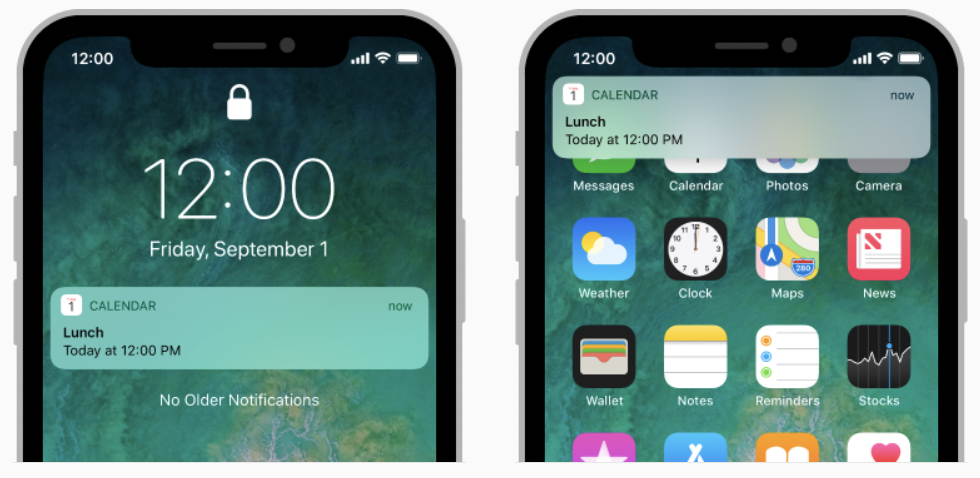
Source: Apple
User notifications can include customized messages sent to people at certain times or when users complete a pre-determined task.
Learn more about how push notifications work: How To Win Back App Users Who Opt Out of Push Notifications
Run Referral Incentives
Refer-a-friend programs are active on apps of all kinds. Get creative by running a referral campaign of your own by providing those who refer others with unique and valuable incentives.
For instance, the consumer stock exchange platform Robinhood ran a successful referral campaign by offering users free shares of stocks for referrals that resulted in a conversion.
This program helped simulate a word-of-mouth marketing campaign.
Advertise New Features on an App Landing Page
After spending time iterating and optimizing the overall user experience (UX) of your app, people should know about everything your app offers.
Consider advertising new-and-improved features in any digital marketing format your prefer.
Your post-launch landing pages aren’t likely to resemble pre-launch ones — and that’s okay! Iteration is incredibly important in every part of launching an app, and your advertising strategy should reflect that.
Marketing Your App Begins Pre-Launch
The app store is crowded. To grow your user base, begin promoting your app well before the launch.
These 10 tactics allow you to generate buzz that will translate into traction and growth once you’re ready for downloads.
Already launched your app and need post-launch marketing tactics? Here are 5 app marketing strategies for you.

